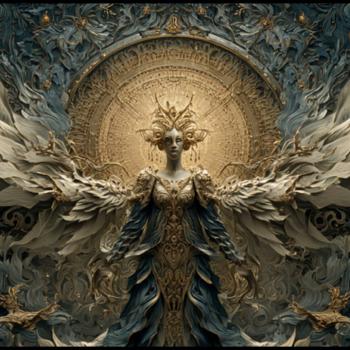
The Church of Jesus Christ of Latter-day Saints teaches that there are four official sacred canonical texts, one of which is the Book of Mormon: Another Testament of Jesus Christ. The other three are the Bible, The Doctrine and Covenants, and The Pearl of Great Price.
Joseph Smith, the founder of The Church of Jesus Christ of Latter-day Saints, indicated that he found a set of engraved metal plates near his home in upper-state New York. He was led to these plates by an angel named Moroni, who is said to have been the very individual who, when mortal, had buried the plates. Smith was inspired by God to translate this ancient text, which was written in a language referred to as “reformed Egyptian” (Mormon 9:32). He did so, utilizing an ancient Urim and Thummim which was buried alongside of the plates. Smith published the book in 1830 and, after translating the material, he returned the plates to Moroni. The account of Smith’s encounter with Moroni and the discovery of the texts is included in the introductory pages of the Book of Mormon. Joseph Smith referred to the book as “the keystone of our religion.”
The Book of Mormon is composed of fifteen books, each divided into chapters and verses much like the Bible is. The text includes the account of an ancient prophet named Mormon, who lived in the 5th century A.D., and who gathered more than a thousand years of records, abridging them into what is now known as The Book of Mormon (Mormon 6.6). Moroni, who led Smith to the plates, was the son Mormon (Mormon 6.11). He was also the last of the prophets mentioned in the Book of Mormon.
Contrary to common assumptions, The Book of Mormon is not the Latter-day Saint version of the Bible. It contains an entirely different narrative, chronicling the travels, experiences, and beliefs of several groups of people who migrated from the ancient Near East—then dwelling in the Western Hemisphere during the period between the third millennium BC and the 5th-century AD. For example, the Book of Mormon tells of Mulek—a son of King Zedekiah of Judah, the last king before the Exile and the destruction of Jerusalem (2 Kings 25.1-7)—who is said to have escaped the slaughter of his family and fled to the western hemisphere (Helaman 6:10 & 8.21). Another narrative in the Book of Mormon tells of a man named Lehi (a descendant of Joseph, one of the sons of Israel). Lehi and his family left Jerusalem around 600 B.C. After eight years of living in the wilderness, the family sailed to the Western Hemisphere (1 Nephi 17). This family grew and eventually split into two clans, the Nephites and the Lamanites, who often warred against each other. Several of the books in the Book of Mormon relate the history of these two tribes and their encounters with one another. Latter-day Saints have traditionally understood that these various peoples who migrated to the Americas (as chronicled in the Book of Mormon) intermingled and intermarried with those who are the ancestors of certain Native America tribes—though which are unknown.
Among other things, The Book of Mormon describes an appearance of the resurrected Jesus to a people dwelling in the Americas not long after His resurrection (3 Nephi 11-27). He is said to have established His Church among them, called and ordained Twelve apostles (as in the Bible), taught the people His gospel, and then ascended again into heaven. It is because of this central narrative that the official subtitle of The Book of Mormon is “Another Testament of Jesus Christ.”
Latter-day Saint Christians are often referred to as “Mormons” because of their use of this additional book of ancient scripture—though they prefer their Church to be called “The Church of Jesus Christ of Latter-day Saints,” because they see it as Christ’s Church, not the prophet Mormon’s.
12/8/2021 3:41:13 PM









